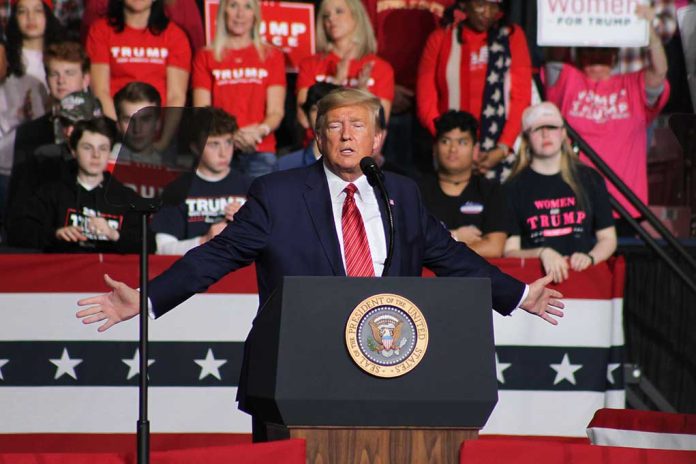
A proposed 10% tariff on Chinese imports aims to tackle the fentanyl crisis in the U.S., yet questions remain about the strategy’s efficacy and its potential broader impacts on global trade.
Key Takeaways
- President Trump plans to impose a 10% tariff on Chinese imports starting February 1st.
- The tariffs aim to pressure China to control fentanyl exportation, which contributes to the U.S. opioid crisis.
- Economists caution that the tariffs may lead to retaliatory actions and disrupt global trade.
- The financial impact of the tariffs on Chinese markets is already observable.
Tariffs as a Strategic Measure
President Trump has signaled a 10% tariff imposition on Chinese goods entering the U.S. beginning February 1st. The move targets China’s alleged role in the trafficking of fentanyl, indicating a strategic economic approach aimed at stemming the opioid crisis gripping America. Trump’s actions highlight the belief that leveraging trade against China could prompt stronger regulatory measures from Beijing, ideally curbing the manufacture and export of this life-threatening synthetic opioid.
Such a tariff is anticipated to reinforce an international response where economic and public health strategies interlace, emphasizing that only collaborative action can address global health emergencies effectively. Trump aims to make an example of China’s purported supply chains linked to fentanyl production, turning economic threats into a component to induce meaningful reform.
Global Economic Ramifications
The tariff announcement has already impacted Chinese financial markets, leading to a decline in stock indices and the yuan. After Trump remarked, “We’re talking about a tariff of 10 percent on China based on the fact that they’re sending fentanyl to Mexico and Canada,” it became apparent that the administration considers this policy not just about economics but encompassing a greater cause.
“We’re talking about a tariff of 10 percent on China based on the fact that they’re sending fentanyl to Mexico and Canada.” – Mr. Trump
Yet, the proposed tariffs may have unintended consequences. Economists worry about potential retaliatory tariffs against American industries, risking a global trade war. The burden of such actions could lead to inflation and a slowdown in U.S. economic growth, complicating an already tense international landscape.
Intervention with Complex Outcomes
The strategy to impose tariffs to tackle a health crisis demonstrates an unconventional approach mixing economic policies with national health strategy. By targeting China, the initiative hopes to choke the supply at its source and reduce fentanyl-related casualties in the U.S. However, implementing this measure requires navigating a complex tapestry of international relations and economic dependencies.
“President Trump said on Tuesday that he intended to impose a 10 percent tariff on Chinese imports into the United States on Feb. 1, a decision that is sure to escalate trade tensions between the world’s largest economies.” – President Trump
While Trump remains resolute, describing the European Union as another major player on his tariff radar, the success of such policies will hinge on both the direct and indirect responses from targeted nations. For now, what remains clear is the administration’s willingness to intertwine economic and health initiatives against a backdrop of potential widespread international ramifications.
Sources
1. Trump threatens 10% tariff on China and considers EU levy
2. Trump Says He Intends to Impose 10% Tariffs on Chinese Imports on Feb. 1














